Let’s get real for a moment…
You’re looking at that old writing desk in your grandma’s attic. Or maybe you’re scrolling through “too-good-to-be-true” listings on Facebook Marketplace.
It looks old. It smells old. But is it really an antique or just a fake vintage piece made to look worn?
Good news: I’m here to help. I’ve spent many weekends exploring antique stores and visiting estate sales. I even got upset when I learned I overpaid for a “reproduction.”
Today, I’ll share tips to help you spot an authentic antique writing desk with confidence. Let’s figure this out together!
What Actually Is an Antique Writing Desk?
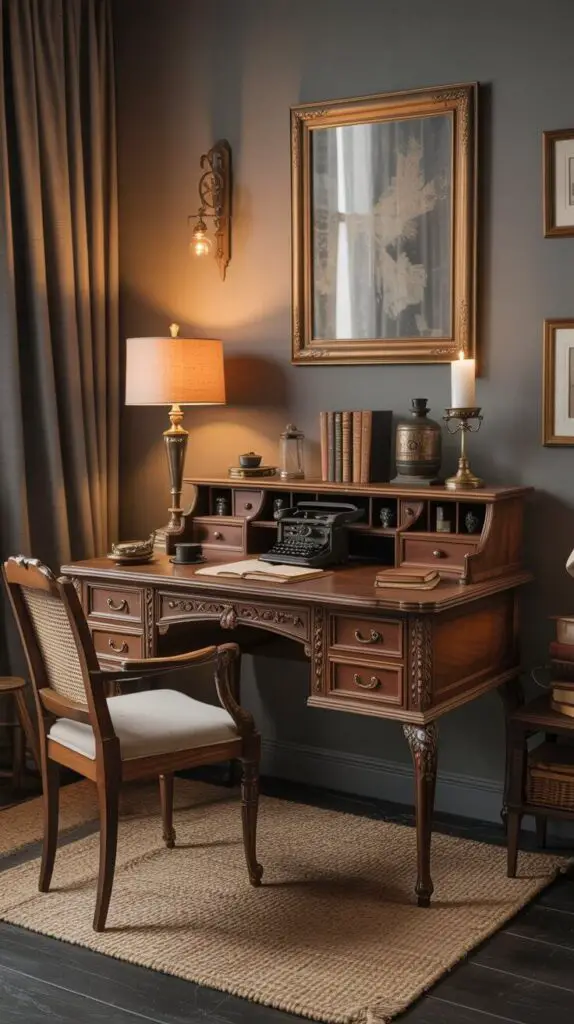
First off, let’s define what we’re dealing with.
An “antique” typically means the piece is at least 100 years old.
That’s the magic number. Anything newer falls into the “vintage” or “retro” category (which is still cool, but let’s not call it antique, okay?).
So when we’re talking about antique writing desks, we’re referring to desks made before the 1920s.
Think Queen Anne, Victorian, Edwardian vibes—not IKEA’s great-great-granddad.
1. Check the Construction (AKA the Desk’s Skeleton)
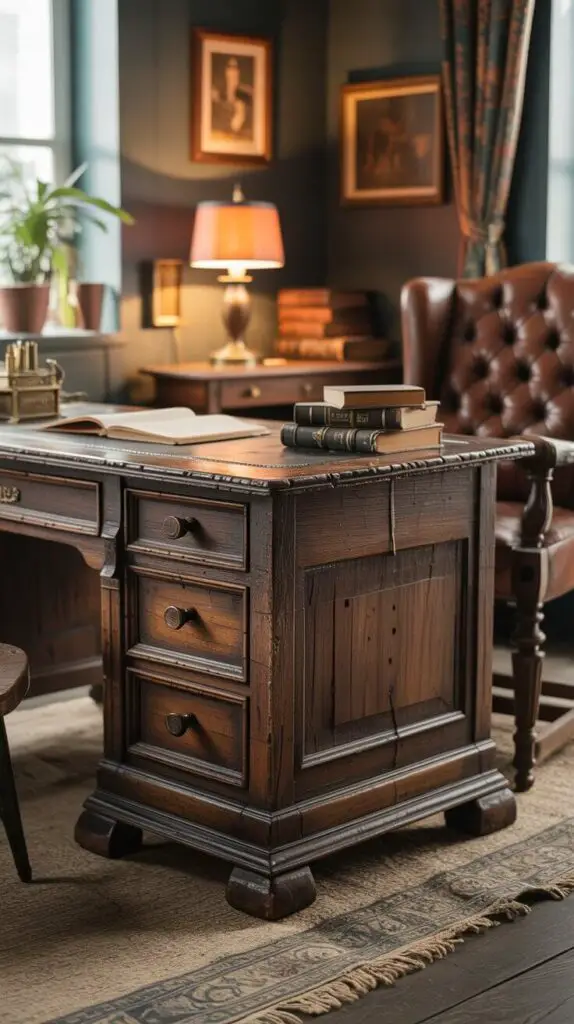
You can learn so much about a desk just by flipping it over or pulling out a drawer. And no, you don’t need to be an expert woodworker—just observant.
🛠️ How’s it put together?
Look for these signs:
- Hand-cut dovetail joints – These are irregular and a bit wonky. Machine-cut dovetails (perfect and even) came in after the 1860s.
- Square nails or wooden pegs – If it’s held together with screws that look brand new, it’s probably not 19th century. FYI: round nails came into the scene around the 1900s.
- Tool marks – Chisel marks, saw lines, and other imperfections? That’s gold. Those quirks scream “made by hand,” not “mass-produced in a factory.”
👉 Pro Tip: Check the back and underside of the desk. No one bothers to fake those parts.
2. Feel the Finish (No, Really—Touch It)
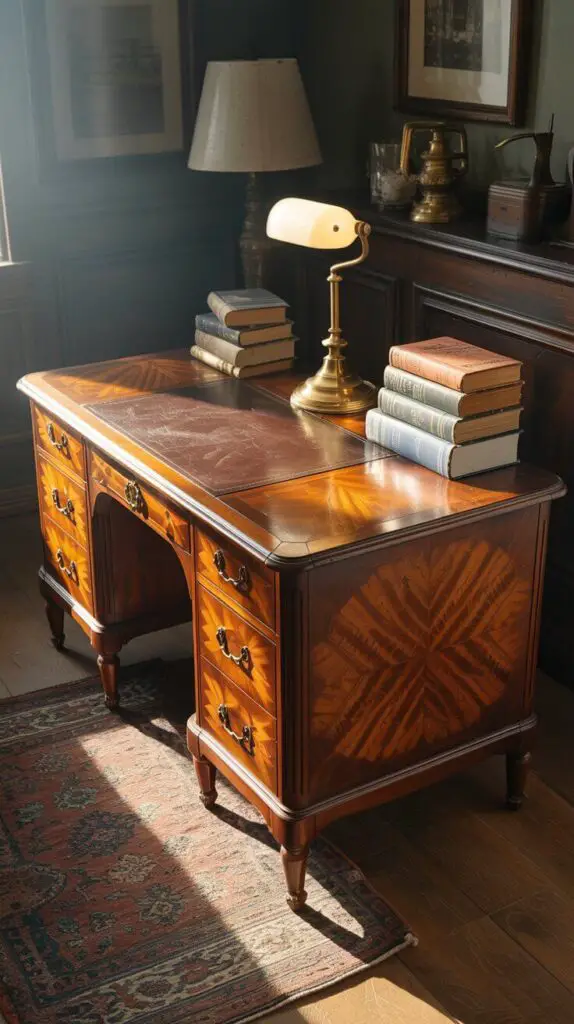
Now’s not the time to be shy. Run your hand over that surface like it’s auditioning for a L’Oréal commercial.
What you’re feeling for:
- Shellac or oil finishes – These older finishes feel softer and may show signs of age like “crazing” (tiny cracks).
- Polyurethane – If it feels like a plastic coating, that’s a modern finish. Nope, not antique.
- Darkened wood grain – Real aging happens over time. You’ll see uneven coloration from decades (or centuries) of sun exposure and use.
And if the desk smells like musty books and regrets? That’s oddly a good sign. 😂
3. Peek at the Wood Type
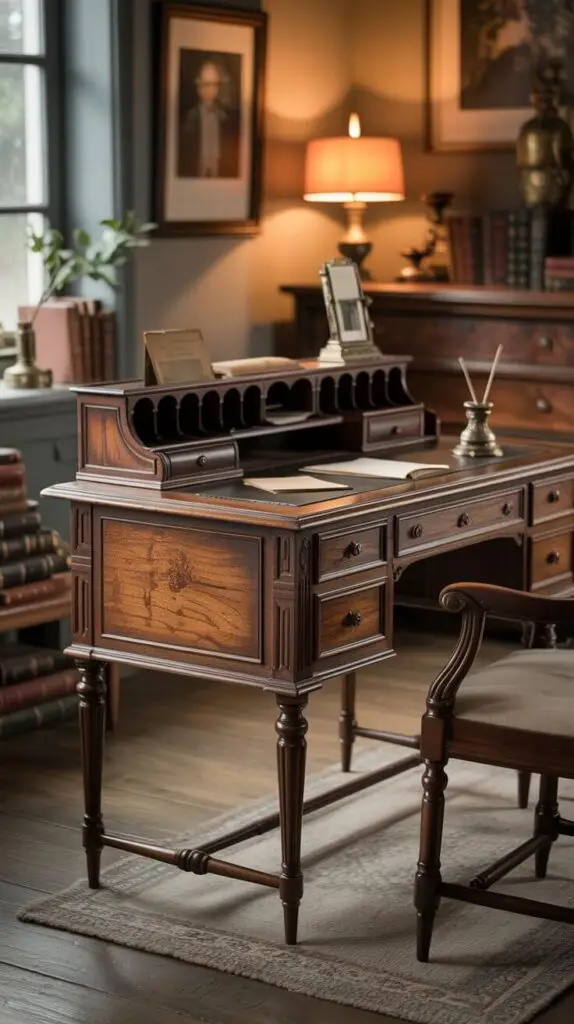
Different woods tell different stories. And no, we’re not going to do a lumber deep-dive, I promise.
But here’s the short and sweet version:
- Oak, walnut, and mahogany were common in 18th and 19th century desks.
- Cherry and maple pop up a lot in American antiques.
- Pine was cheaper and used on the backs or insides.
💡 Watch out for MDF or plywood. If you spot that, just walk away. Fast.
4. Look for Labels, Signatures, or Stamps
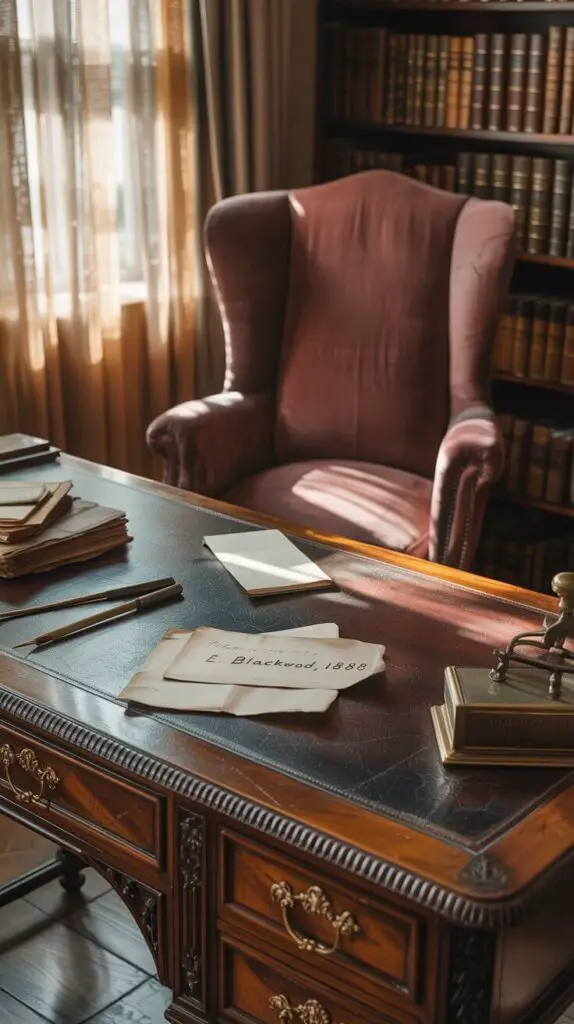
Antique desks don’t exactly come with QR codes (unfortunately), but they do sometimes carry little clues.
You might find:
- Maker’s stamps – These can be branded, stenciled, or even handwritten.
- Paper labels – These are often inside drawers or on the back panel.
- Burn marks or carvings – Not always obvious, but check corners or hidden surfaces.
If you see a name, Google it. You might just hit the jackpot. And if it says “Made in China” in Times New Roman font? Yeah… nope.
5. Examine the Style and Design

Here’s where things get fun (and a little nerdy, in the best way). The style of the desk can tell you when and where it was made.
Some styles to know:
- Queen Anne (1700s) – Cabriole legs, pad feet, and minimal ornamentation. Fancy but subtle.
- Victorian (1837–1901) – Over-the-top carving, dramatic shapes, and sometimes marble tops.
- Edwardian (1901–1910s) – A little more refined than Victorian, often with lighter woods and cleaner lines.
Compare the desk’s features with online style guides. And trust your gut—if it looks like it came from a movie set in 1890, you’re probably on the right track.
6. Inspect for Signs of Real Age (Not Fake Distressing)
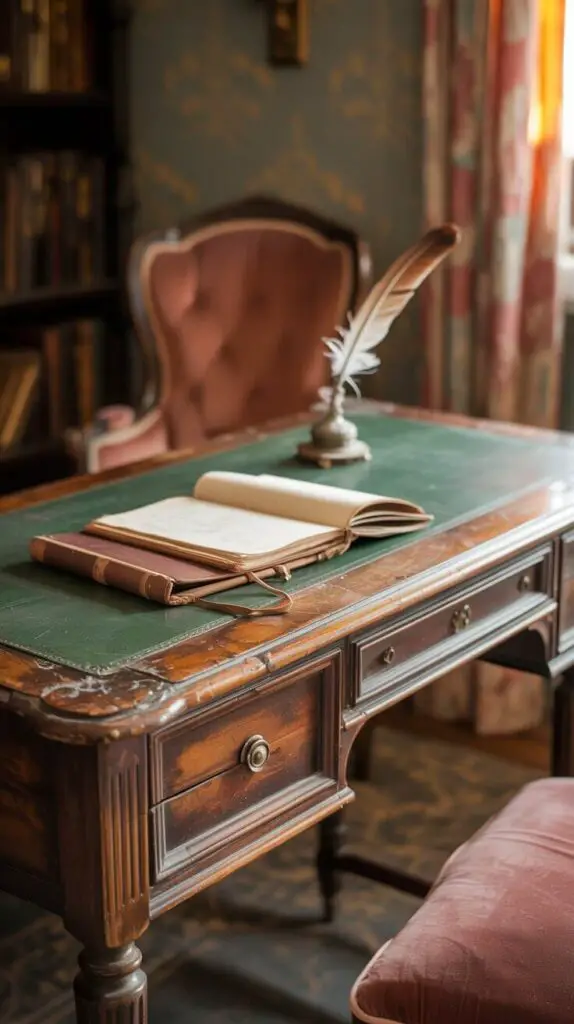
Here’s the deal: Some people go way too far trying to make new furniture look old. Like, relax, Karen. We see the sledgehammer marks 🙄.
True age shows up as:
- Wear in all the right places – Drawer runners, edges, and surfaces should have natural wear.
- Shrinkage or warping – Wood moves over time. If a drawer doesn’t fit perfectly anymore, that’s kinda beautiful.
- Stains and patina – A genuine antique won’t be spotless. And IMO, that’s part of the charm.
Basically, if it looks too perfect, it probably isn’t the real deal.
7. Beware of Reproductions (They’re Sneaky AF)
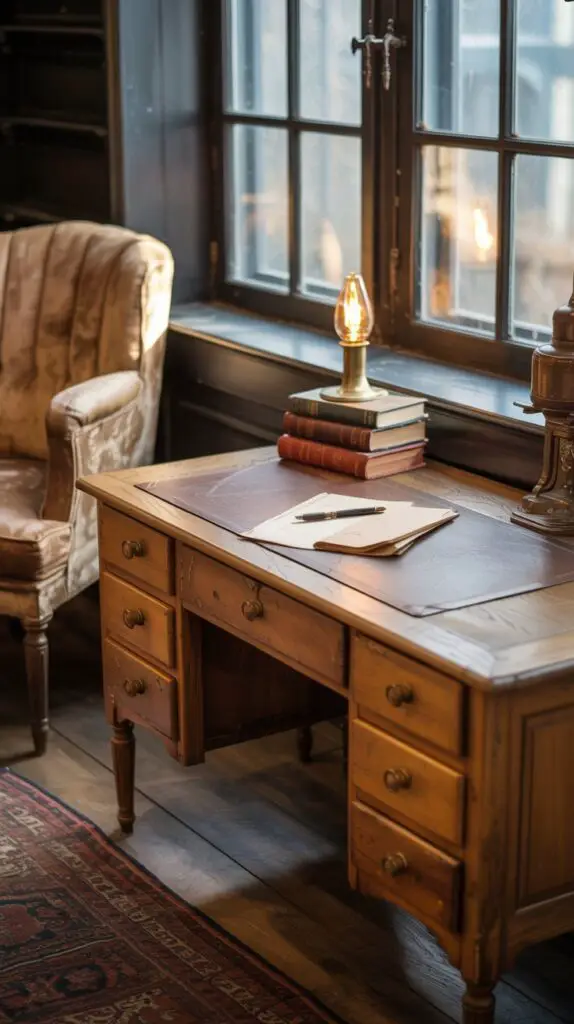
I’ve fallen for this trap, so let me save you the headache.
Reproductions can be really convincing—especially when they’re made using old wood or “antiquing” techniques. But here’s how you can sniff them out:
- Even aging – True antiques age unevenly. Reproductions often have that fake, sandpapered-all-over look.
- Matching screws and hardware – Antique desks usually have some random mix of nails, screws, and hinges.
- Too-cheap price – If it sounds like a bargain, assume something’s up. Quality antiques don’t usually go for $100 unless you’re really lucky.
8. Ask for Provenance (Fancy Word, I Know)
Provenance just means: Where the heck did this thing come from?
If the seller can tell you the story—“It came from a 19th-century farmhouse in Vermont”—that’s a good sign. Bonus points if they have receipts, photos, or documentation.
If they just shrug and say, “It’s old, I think,” you’ll want to proceed with caution. Or just smile, nod, and slowly back away. 🙂
9. Use a Blacklight (Yes, Really)
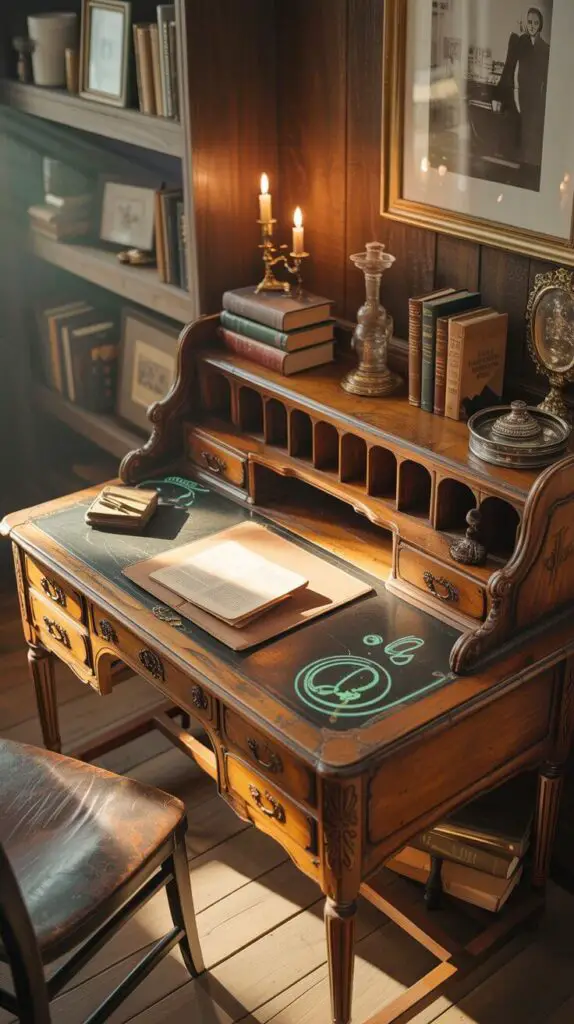
This might sound like a CSI episode, but a blacklight can actually help you out.
Here’s how:
- Shellac and older varnishes will often fluoresce under UV light.
- Modern finishes usually don’t.
- You might also spot repairs or replaced pieces that the naked eye misses.
I know it’s a little extra, but hey—if you’re serious about collecting, it’s worth the glow-up.
10. Still Not Sure? Call in the Experts
When in doubt, phone a friend. Or better yet—an appraiser.
Plenty of antique dealers and auction houses offer evaluations (some even for free if you email them pics). There are also Facebook groups and Reddit threads filled with fellow antique nerds who love this stuff way too much. (Guilty.)
It’s always better to ask than to guess and regret.
Final Thoughts: Trust Your Gut, Not Just the Label
Look, identifying an antique writing desk isn’t an exact science. It’s part history lesson, part detective work, and a little bit of intuition.
My best advice? Take your time. Ask questions. Touch the wood. Look underneath. And remember—it’s okay to walk away if something doesn’t feel right.
And hey, even if you do get duped once or twice (we all have), chalk it up to experience. At the very least, you’ll have a great story to tell over coffee. Or a slightly overpriced side table. 😉
TL;DR (Because I Know You Scrolled 😏)
Here’s a quick recap on how to identify an antique writing desk:
- Check for hand-cut joints, old nails, and tool marks
- Feel the finish—shellac = good, plastic = nope
- Identify the wood—oak, walnut, cherry are your friends
- Search for stamps, labels, or signatures
- Study the style—Queen Anne, Victorian, etc.
- Look for real wear and age—not fake distressing
- Be wary of deals that are “too good”
- Ask for provenance or history
- Use a blacklight for a little Sherlock Holmes moment
- Get help from an expert if needed
Now go out there, armed with your knowledge and blacklight (seriously, bring one), and find that perfect antique desk. Just promise me one thing: you’ll send me a pic when you do. 😄
Happy hunting, my fellow antique adventurer!
Related Posts:-